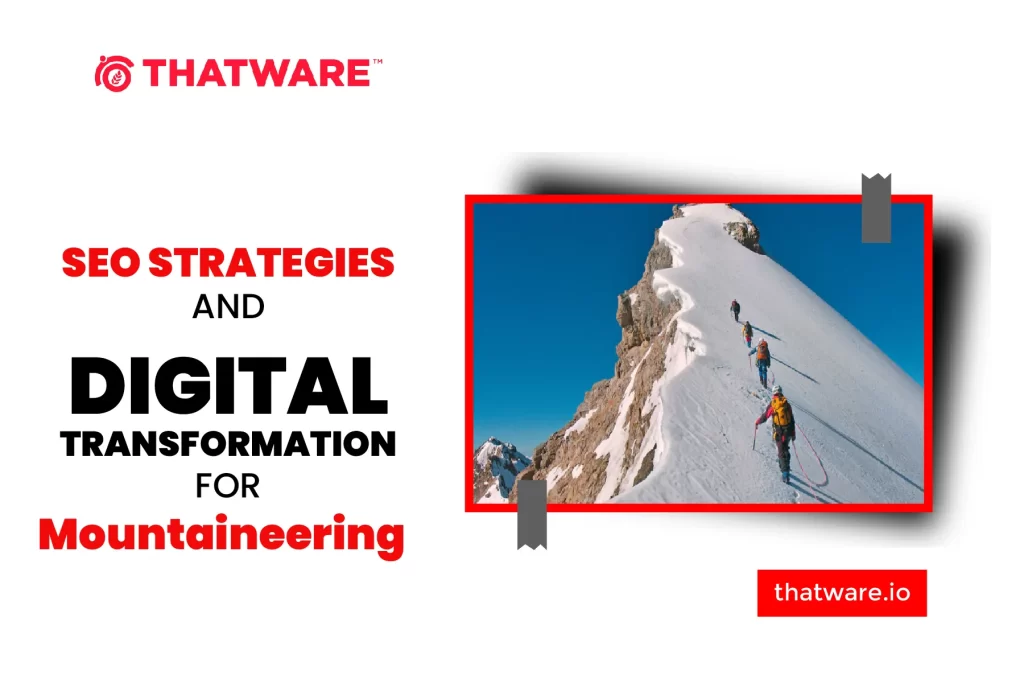Organic SEO differs and digital transformation strategy for mountaineering from paid search because you optimize your website and its contents for free placement in search results. Paid search allows you to pay for ads appearing at the top of search results using targeted keywords. Most website owners prioritize off-page and on-page SEO while ignoring technical SEO. You must prioritize all three to improve your chances of appearing higher in search results.
Mountaineering SEO Techniques and Strategies
SEO experts employ the following SEO methods and digital growth strategy for mountaineering:
- Off-Page SEO
- Technical SEO
- On-Page SEO
Let’s go over each step individually.
Off-Page SEO
Off-page SEO refers to actions taken away from your website that boost your authority, popularity, trustworthiness, and relevance. These actions include existing trustworthy websites linking to your site, brand mentions, and reader content sharing.
- Develop Shareable Content
You must create high-quality content for people to share it. Make infographics, blogs, tutorials, how-to guides, reports, videos, white papers, and other materials. Then, distribute your content via social media (LinkedIn, Facebook, Twitter, and Pinterest), industry groups and forums, and your email newsletter.
People who see your posts will visit your website, and if it resonates with them, they will share it on their platforms. This has a cascading effect, which should increase website traffic to your page.
- Investigate Reputable Websites for Backlinks
A reputable website already has a lot of traffic, backlinks, and shareable content and is a reliable source of information. YouTube.com, Apple.com, Google.com, LinkedIn.com, and Wikipedia.org are some examples.
You will need trustworthy sites to link to you for your website to gain credibility. If you need help getting a link from Wikipedia, look for sites that rank higher than you in Google search results.
First, find websites (within your niche) that you believe will link to your content and rank higher in search results than you do. Not only will this require significant time in researching and contacting the websites, but your content must also benefit them. Backlinks, mentions, and shares of your brand, website, and the content will boost your ranking in search results.
Technical SEO
Technical SEO encompasses all aspects of your website that, aside from content optimization and link building, make it easy for search engines to crawl.
- Errors should be reduced.
To begin, you should reduce site errors, such as broken links or 404 errors, and delete duplicate content. Depending on the number of pages on your website, this could be quick or slow, but fixing any errors is critical before submitting your site to Google.
Send an XML sitemap to Google Second, send an XML sitemap to Google. If you use WordPress, Wix, or Blogger, you will likely have an XML sitemap available by default.
- Check that Google has indexed your website.
Next, make sure Google has indexed your site. If your site still needs to get a Google Search Console profile, you must create one.
- Create a Mobile-Friendly Website
Google crawls and indexes mobile-friendly sites first, so if your site isn’t responsive, it’s unlikely to appear in search results.
On-Page SEO
On-page SEO refers to the content on your website that you can optimize to increase traffic. Title tags, URLs, meta descriptions, headings, and body copy are all examples of this.
To have effective on-page SEO, you must first research the keywords you want to appear for in search results. Consider how your customers find you, how they discuss you, and their interests.
Start pasting the keywords you came up with into Google to find more. At the bottom of the page, you should see a list of related keywords. To generate more keywords, you can also use Google’s Keyword Planner. You must have a Google Ads account to use the tool, but you do not need to create an ad.
Once you’ve compiled a list of keywords that your customers use and that you discovered through Google, incorporate them naturally into your website’s content. You want Google to understand what your website is about when it crawls it. You aid it in understanding by using keywords and phrases.
Avoid keyword stuffing, or you will be penalized by Google. Start with what we mentioned above, and you’ll already put in more effort than many of your competitors. Remember that it can take months to see results from search engine optimization, so be patient and keep working.
Know more about business growth strategy for mountaineering.
